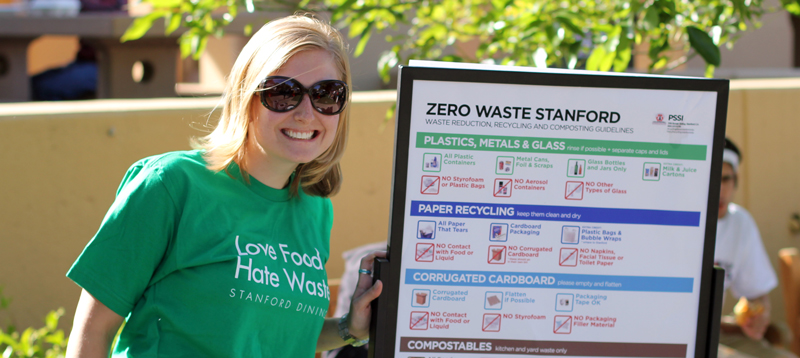Water
Facing four consecutive years of drought, on April 1, 2015 Governor Brown issued a Declaration of Emergency for the State of California due to drought and severe water shortage conditions. Since the announcement, Stanford has completed a detailed analysis of its water consumption to develop a set of measures to further reduce water use.
New Restrictions
With the opening of the new Central Energy Facility, Stanford expects a 15% reduction in total campus potable water use in 2015. Campus leadership also made the decision to shut off most campus fountains, even though all of them recirculate water. New regulations require institutional water users like stanford to limit irrigation using potable water to two days a week.
Effective Immeditately: Irrigation in Faculty & Staff Housing may occur only on Tuesday and Saturday nights for even numbered addresses, and Wednesday and Sunday nights for odd numbered addresses, between the hours of 7 pm and 7 am.
STANFORD WATER CONSERVATION TIPS
In addition to the two-days-per-week watering restrictions, Stanford is asking all users of Stanford's non-potable irrigation water to strive for 25% reductions from 2013 levels. While this is not required by the State Water Board, the drought has drastically reduced Stanford's surface water supplies, resulting in a greater use of groundwater in the non-potable water system. Groundwater can be considered like a ‘bank’ for water supply during droughts; thus, pumping groundwater should be done judiciously in order to preserve an adequate supply for future years if the drought continues, and for future decades when droughts will reoccur. Many campus irrigators who use non-potable irrigation have already begun reduction and efficiency projects expected to achieve significant savings.
Additional mesaures are in place to help increase potential water savings on campus. Regulations, punishable by fines of up to $500 per day for individuals and $10,000 per day for water supply agencies, prohibit:
- The application of domestic water to any hard surface, including, but not limited to, driveways, sidewalks, and asphalt.
- Watering of outdoor landscapes in a manner that causes runoff to adjacent property, non-irrigated areas, private and public walkways, roadways,parking lots or structures. Please call the leak hotline at 650-723-2281 to report any faulty irrigation areas on campus.
- The application of potable water to landscapes during or within 48 hours after measurable rainfall.
- Using a hose to wash a motor vehicle, unless the hose is fitted with a shut-off nozzle.
- Using potable water in a fountain or decorative water feature, unless the water is recirculated.
- Irrigation of landscape more than two days per week (except for systems that use the non-potable campus Lake Water system which is exempt from these rules).
Stanford Water Use Reduction Policy FAQ
Recognition
- Silicon Valley Water Conservation Award in the Large Organization category (2009)
- Clean Bay Award, Palo Alto Regional Water Quality Control Plant (1997–2007)
- Leadership recognition, for eliminating the use of antibacterial soaps, Palo Alto Regional Water Quality Control Plant (2007)
- Santa Clara Valley Urban Runoff Pollution Prevention Program Award, for the site design for storm-water pollution prevention at Stanford Stadium (2007)







